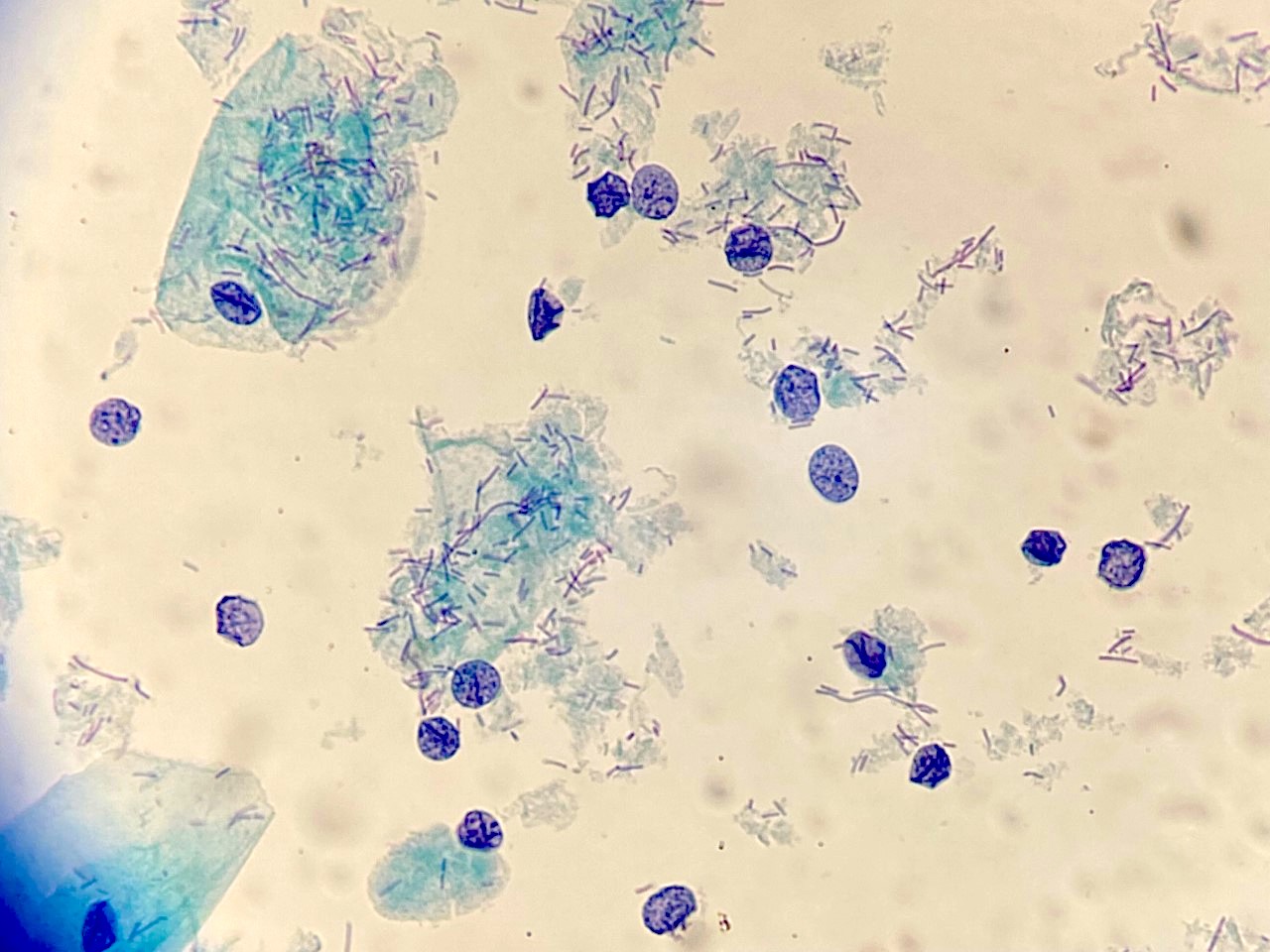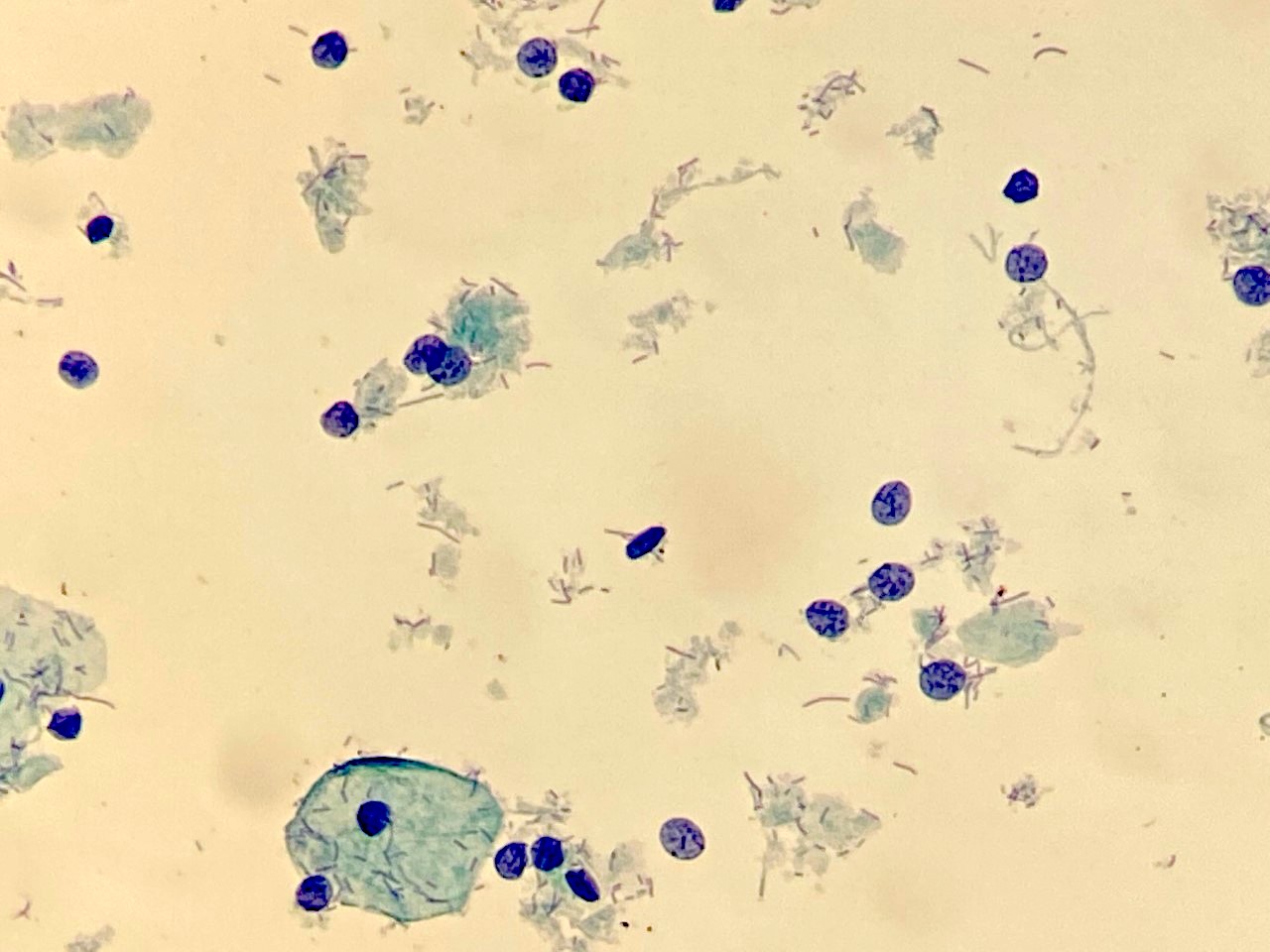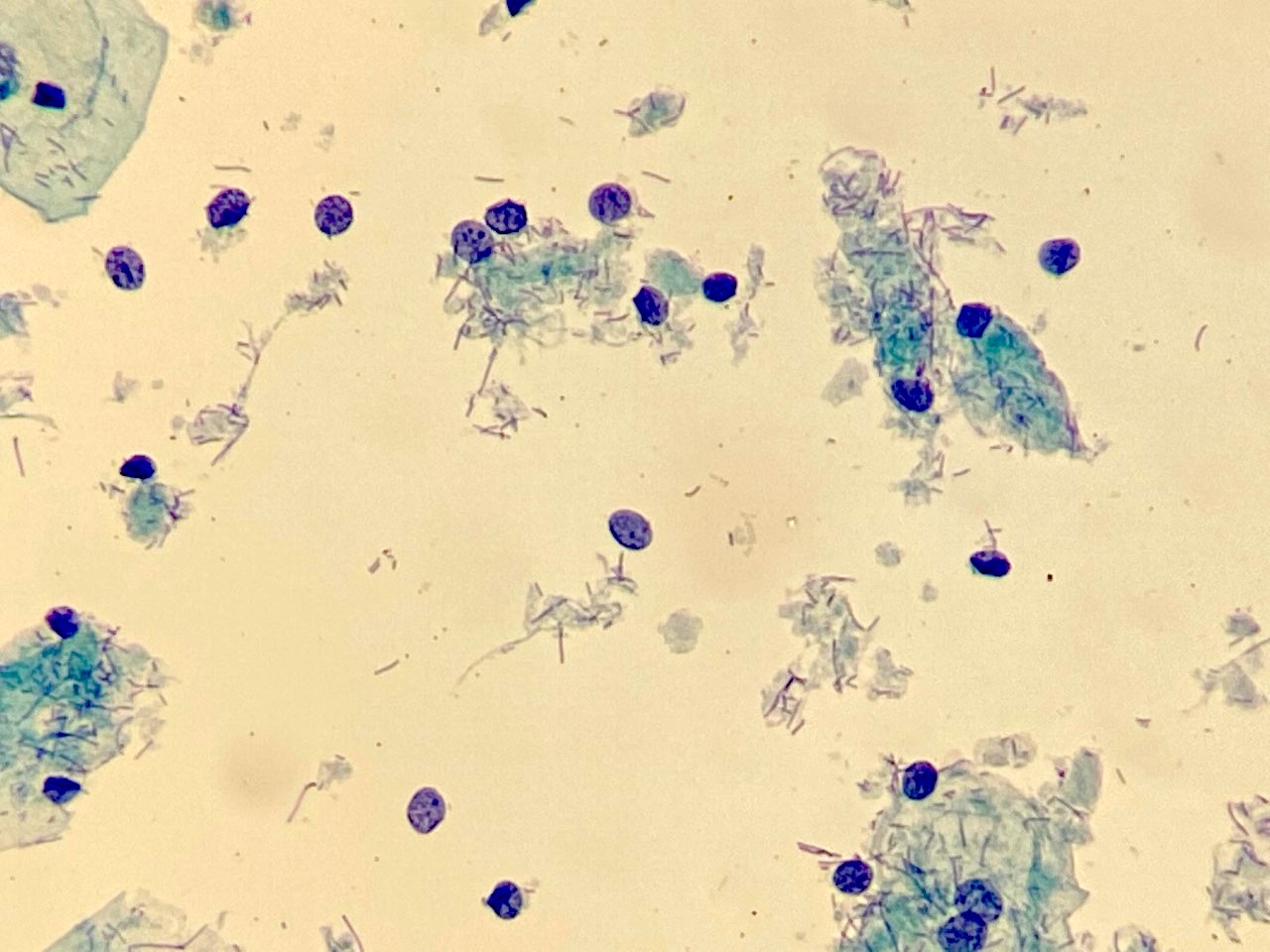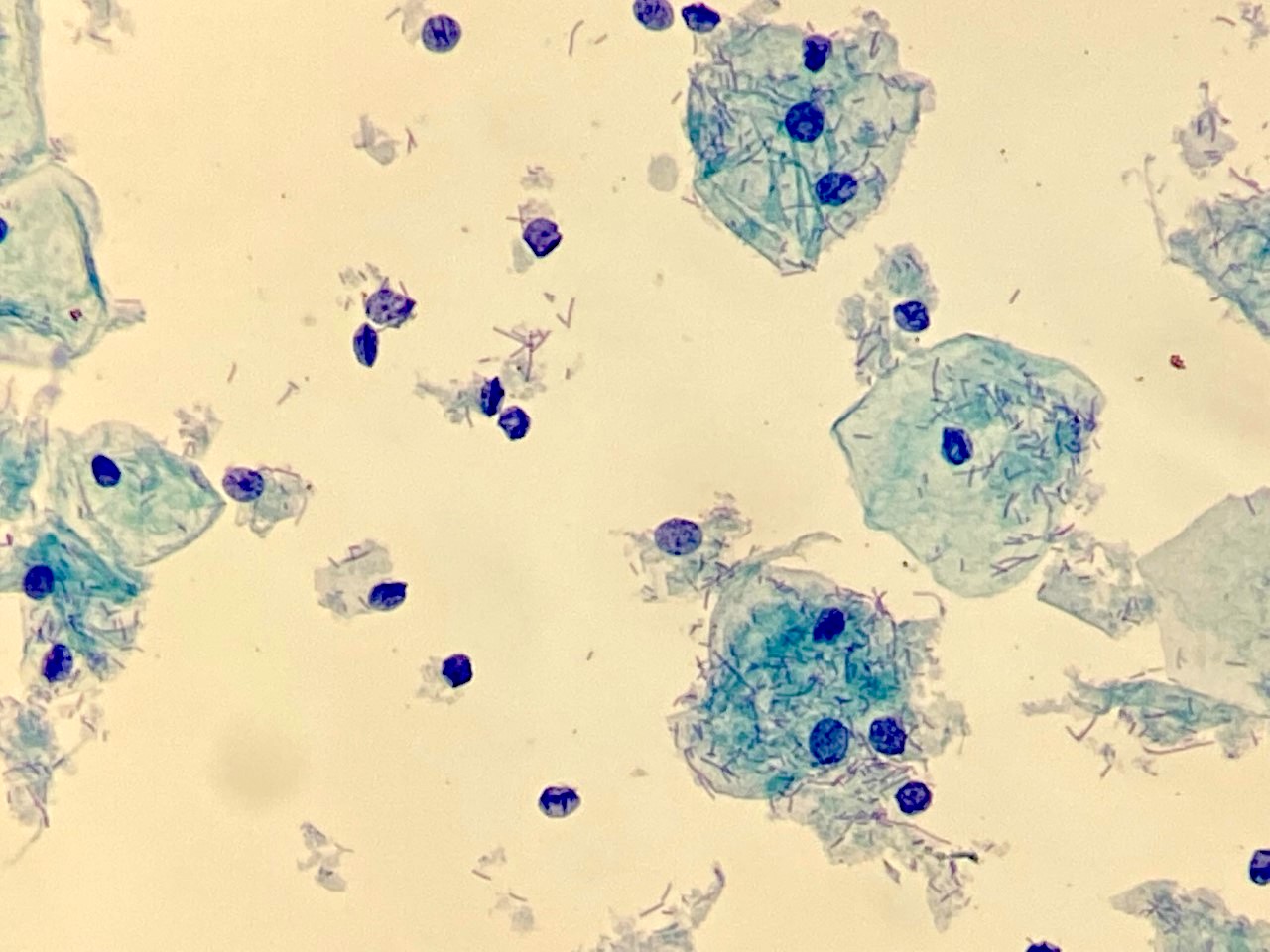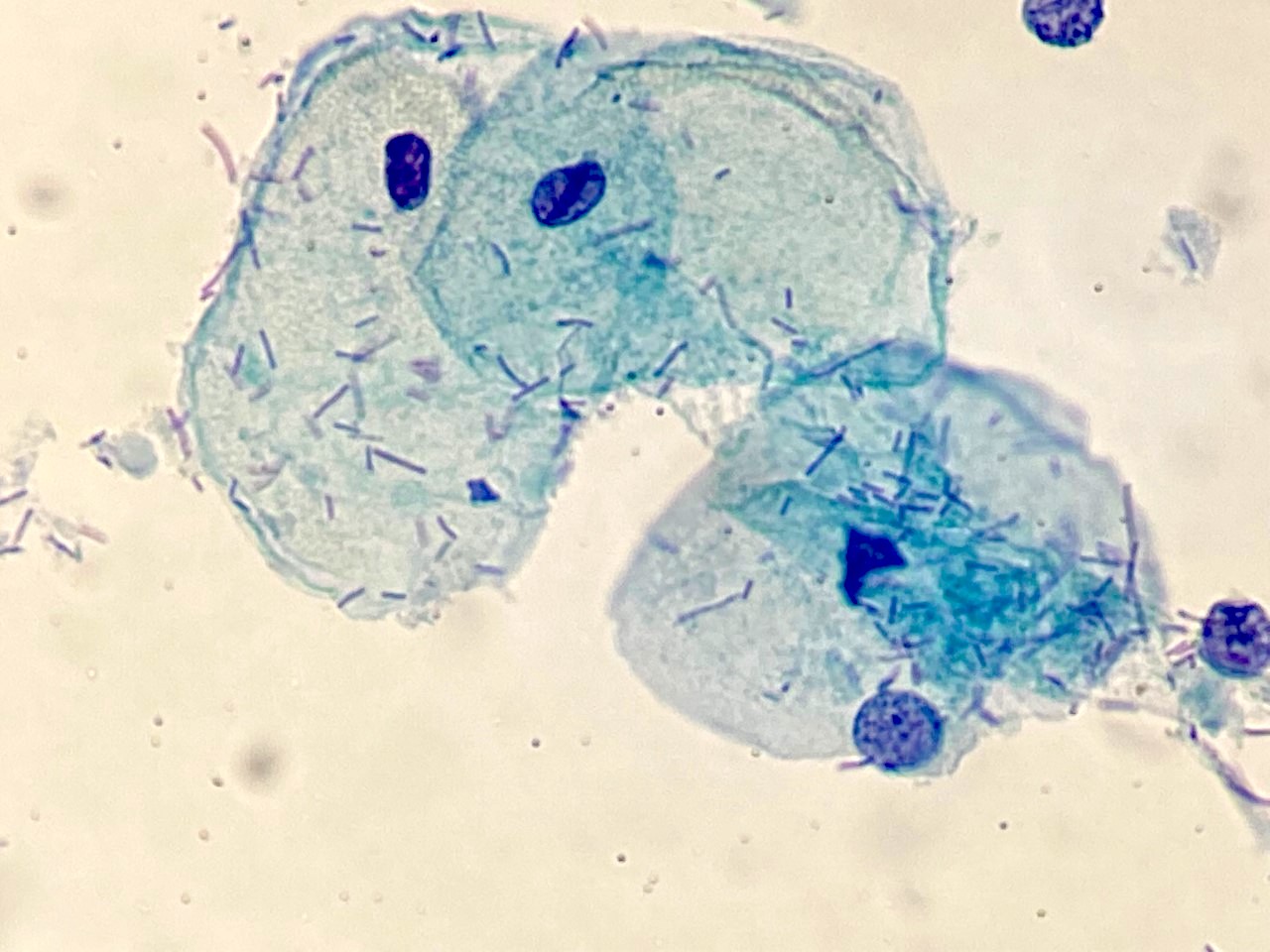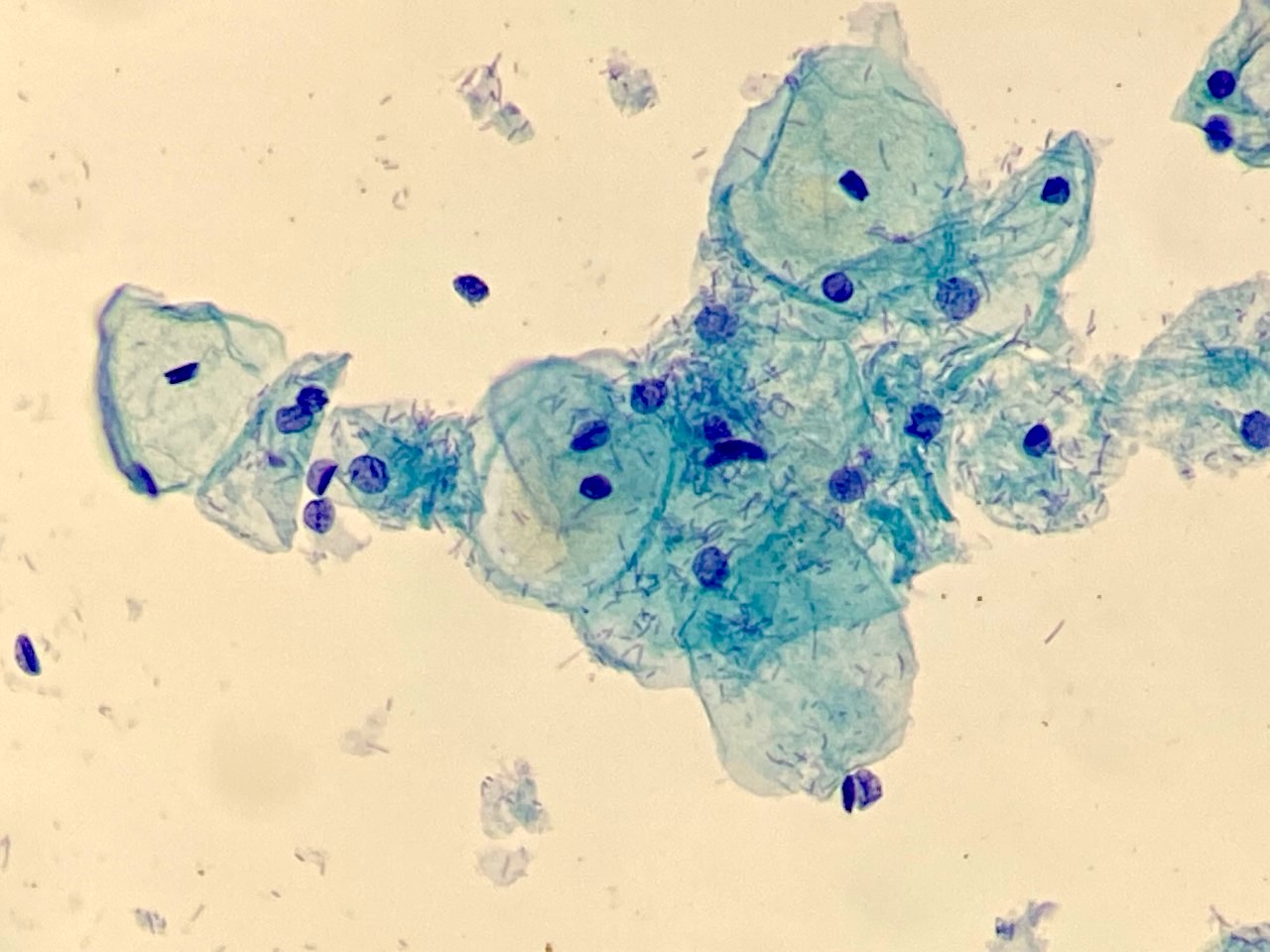Table of Contents
Definition / general | Essential features | Terminology | ICD coding | Epidemiology | Sites | Pathophysiology | Clinical features | Laboratory | Treatment | Cytology description | Cytology images | Videos | Differential diagnosis | Additional references | Board review style question #1 | Board review style answer #1 | Board review style question #2 | Board review style answer #2Cite this page: Al Dallal H, Salih ZT. Lactobacillus. PathologyOutlines.com website. https://www.pathologyoutlines.com/topic/cervixcytologylactobacillus.html. Accessed April 20th, 2024.
Definition / general
- Lactobacillus spp. is a major component of normal vaginal flora
- Lactobacilli are gram positive rods
- They are beneficial because they produce lactic acid, which reduces the vaginal pH and possibly protects from infection by Candida and other pathogens
Essential features
- Lactobacillus spp. is normal vaginal flora that is commonly seen in cervical Pap smears
- Lactobacilli are blue thick rods usually found on the top of intermediate squamous cells
Terminology
- Also known as Döderlein bacilli or Bacillus vaginalis
ICD coding
- ICD-10: B96.89 - other specified bacterial agents as the cause of diseases classified elsewhere
Epidemiology
- Lactobacillus colonizes the mouth, intestine and vagina
- Lactobacillus is predominant during the second half of the menstrual period (luteal phase)
- They cannot thrive in alkaline media; menstrual flow increases vaginal PH and diminishes their growth (Sex Transm Dis 1990;17:51)
- Conditions commonly associated with Lactobacillus (Sex Transm Dis 1990;17:51)
- Pregnancy
- Using progestational drugs including oral contraceptives
- Diabetes
- Premenarchal girls have diminished growth of Lactobacillus due to alkaline vaginal PH (Pediatrics 1978;62:57)
Sites
- Lactobacillus is ubiquitous in the environment and colonizes plants and animals
- In humans, they colonize the mouth, intestine and vagina
Pathophysiology
- Lactobacilli metabolize the glycogen contained within exfoliated intermediate squamous cells which result in cytolysis
- This cellular pattern is commonly seen during the second (luteal) phase of the menstrual cycle
- They play a critical role in preventing illness, including bacterial vaginitis, yeast infection, sexually transmitted disease and even cancer (Microbes Infect 2002;4:319)
- Mechanism by which Lactobacillus prevents pathogens includes
- Blocking adhesion receptors
- Competing for nutrients
- Producing lactic acid by creating acidic vaginal media
Clinical features
- Excessive lactobacterial cytolysis can be associated with vaginosis-like symptoms (cytolytic vaginosis) and may cause (Diagn Cytopathol 2003;29:156)
- Vulvovaginal itching
- Burning
- Discharge
Laboratory
- Biochemical test
- Microbiology culture
- Microscopy: gram positive bacilli, usually seen on cervical Paps; however, are not reported because they are normal flora
Treatment
- No treatment is needed
Cytology description
- Lactobacilli are blue thick rods usually found on the top of the intermediate squamous cells
- They can lyse glycogen rich intermediate cells which may cause cytolysis
- Cytolysis is characterized by bare normal size intermediate cell nuclei, fragments of squamous cytoplasm and abundant bacterial rods
- Abundant cytolysis (> 50%) may be mentioned as quality indicator in Bethesda system but the specimen should not be regarded as unsatisfactory
Cytology images
Videos
Lactobacillus, normal vaginal bacterial rods
Differential diagnosis
- Bacterial vaginosis:
- Coccoid overgrowth over superficial cells, causing a bacterial haze
- Corynebacterium:
- Arranged as groups as opposed to short chains but difficult to differentiate by morphology in a cervical smear (Gray: Diagnostic Cytopathology, 3rd Edition, 2010)
- Leptothrix:
- Very long thread-like bacteria that may form loops
Additional references
Board review style question #1
Board review style answer #1
A. Cytolysis of intermediate squamous cells. Lactobacilli are able to use glycogen rich intermediate cells and are a normal finding that is commonly observed in the second half of the menstrual cycle as well as in pregnancy and diabetic women.
Answer B is incorrect because because Lactobacilli increase vaginal PH.
Answer C is incorrect because no dysplastic changes are seen.
Answer D is incorrect because no other pathogens / bacteria are seen.
Comment Here
Reference: Lactobacillus
Comment Here
Reference: Lactobacillus
Board review style question #2
Cytolysis is observed in > 50% of cells on the cervical Pap slide. How should a pathologist report it according to the Bethesda system?
- Lactobacilli should be reported as pathogenic
- The specimen is satisfactory but should be mentioned as quality indicator
- The specimen should be rejected
- The specimen should be reported as unsatisfactory
Board review style answer #2
B. The specimen is satisfactory but should be mentioned as quality indicator. Answer B is correct because the specimen is satisfactory but should be mentioned as a quality indicator. Abundant cytolysis (more than 50%) may be mentioned as a quality indicator in Bethesda system but the specimen should not be regarded as unsatisfactory. The specimen is satisfactory but should be mentioned as quality indicator. Answer A is incorrect because according to the Bethesda system, there is no need to report Lactobacilli as they are normal vaginal flora. Answer C is incorrect because the specimen should not be rejected according to the Bethesda system. Answer D is incorrect because the specimen should not be reported as unsatisfactory according to the Bethesda system.
Comment Here
Reference: Lactobacillus
Comment Here
Reference: Lactobacillus





